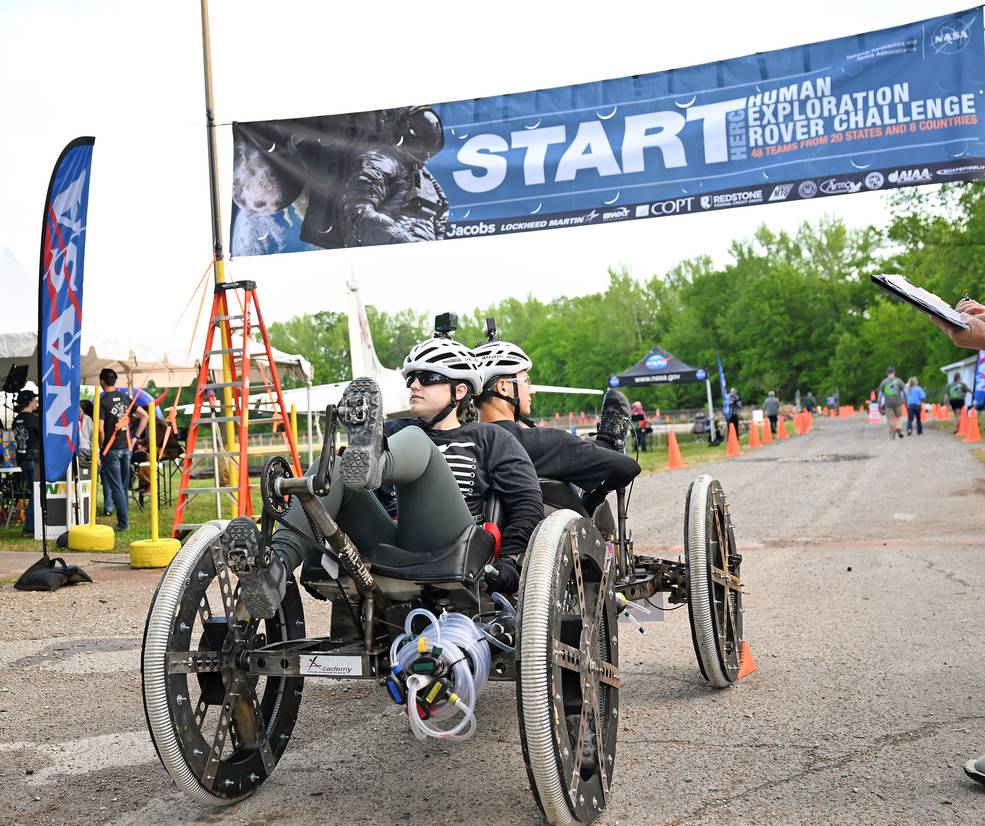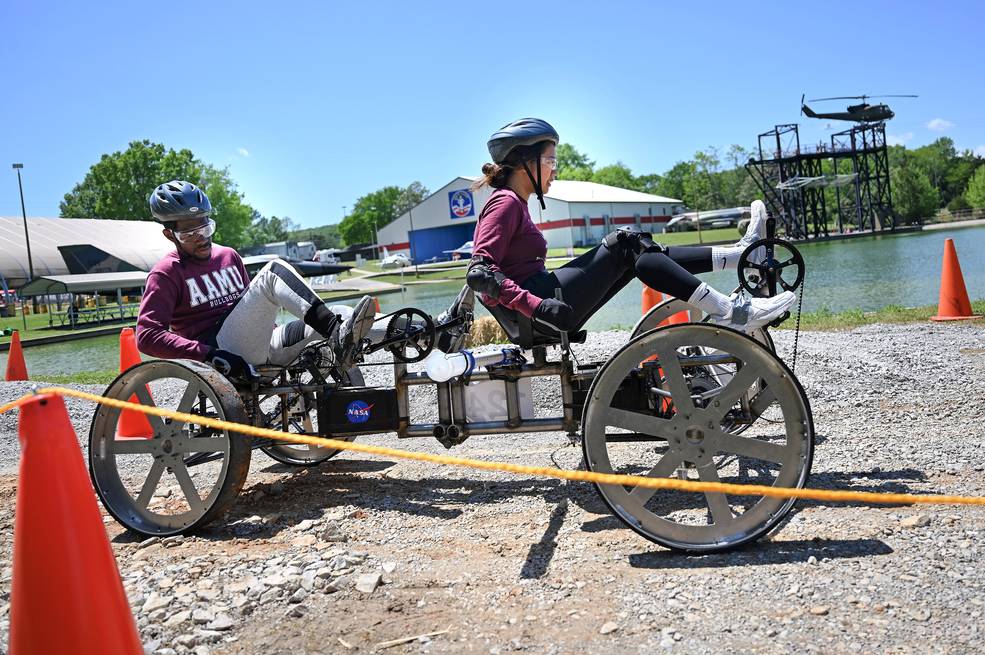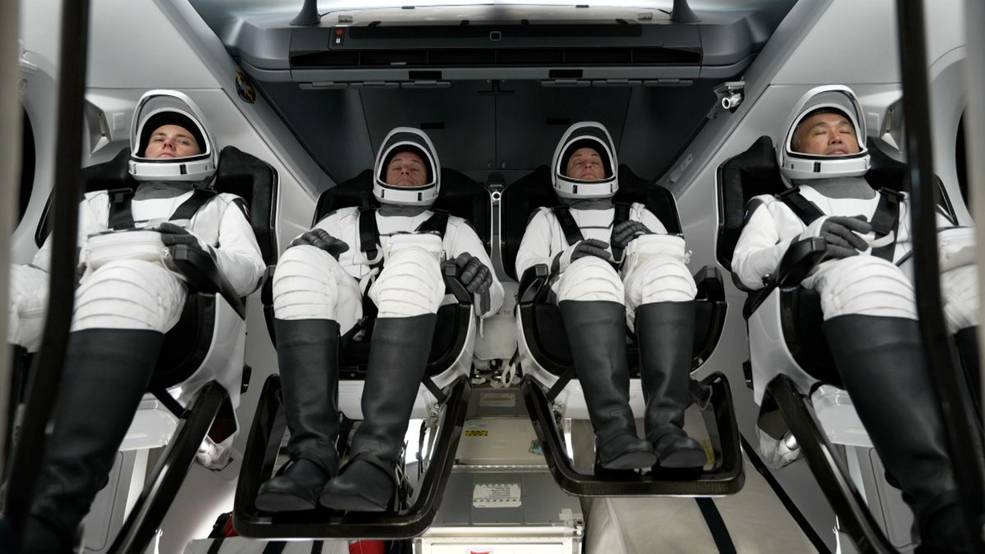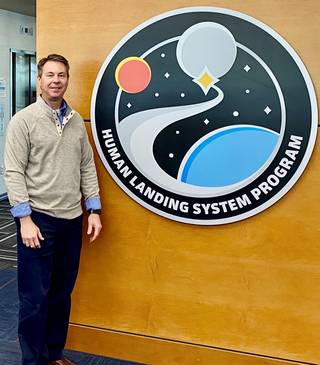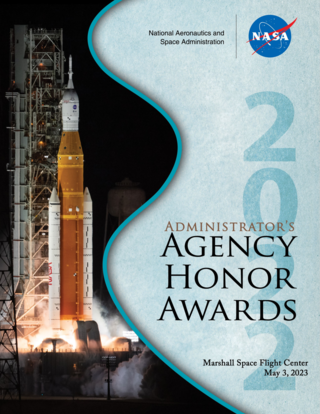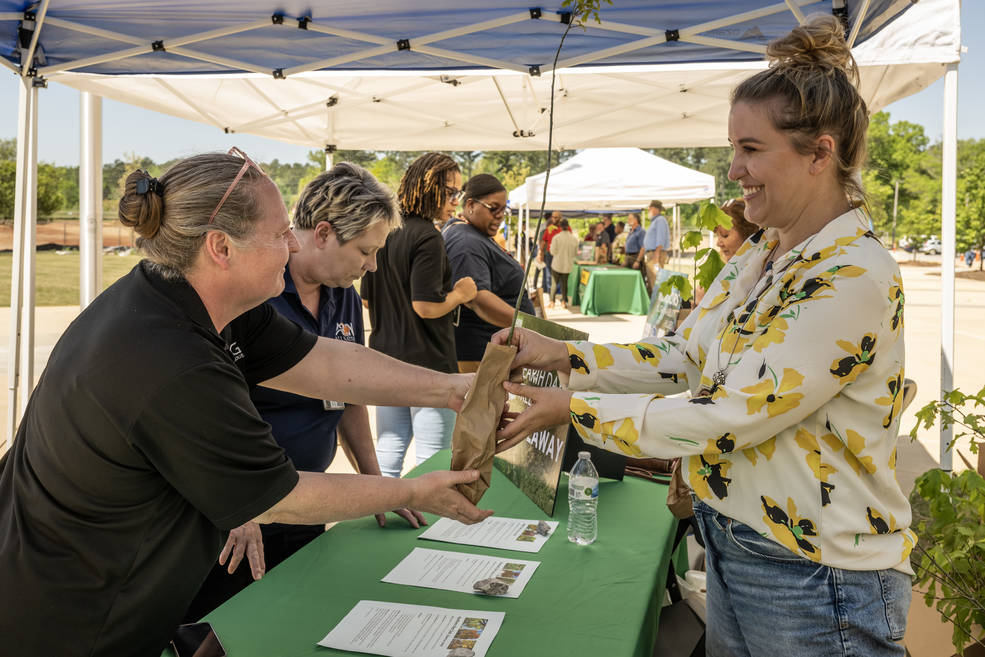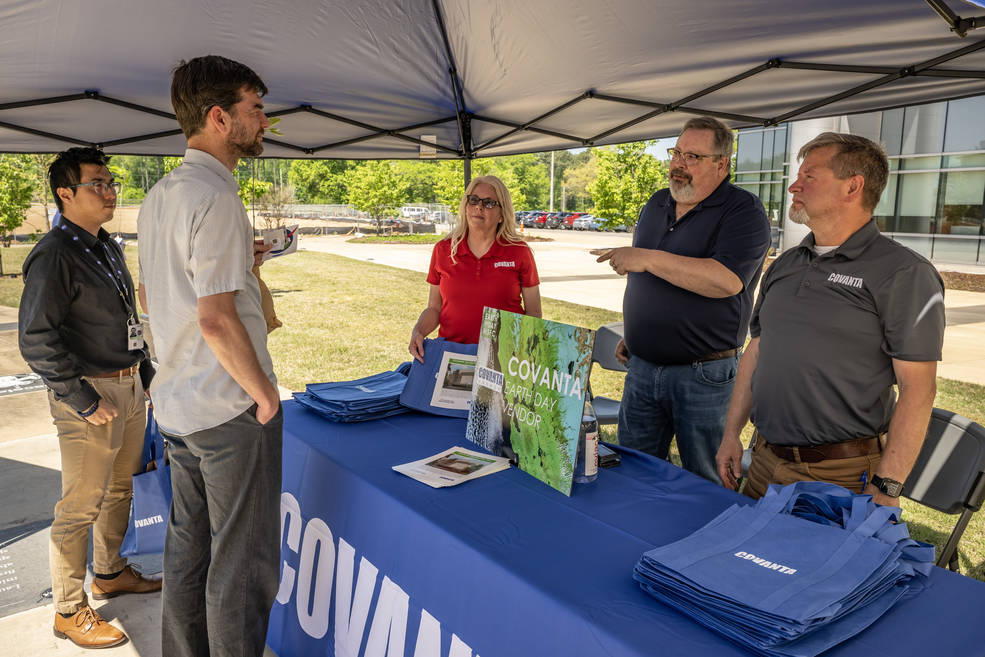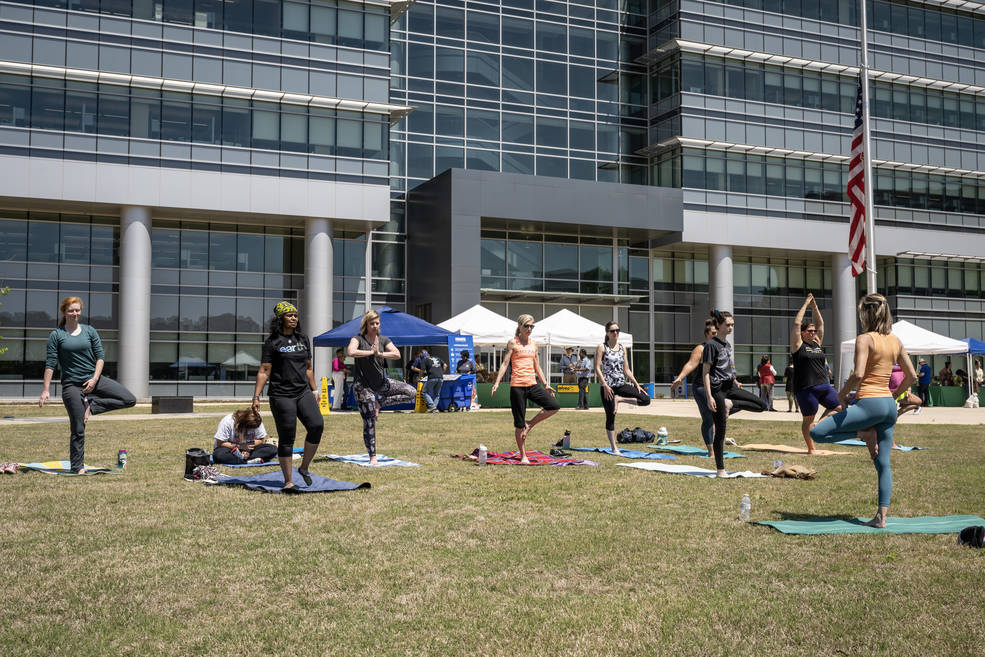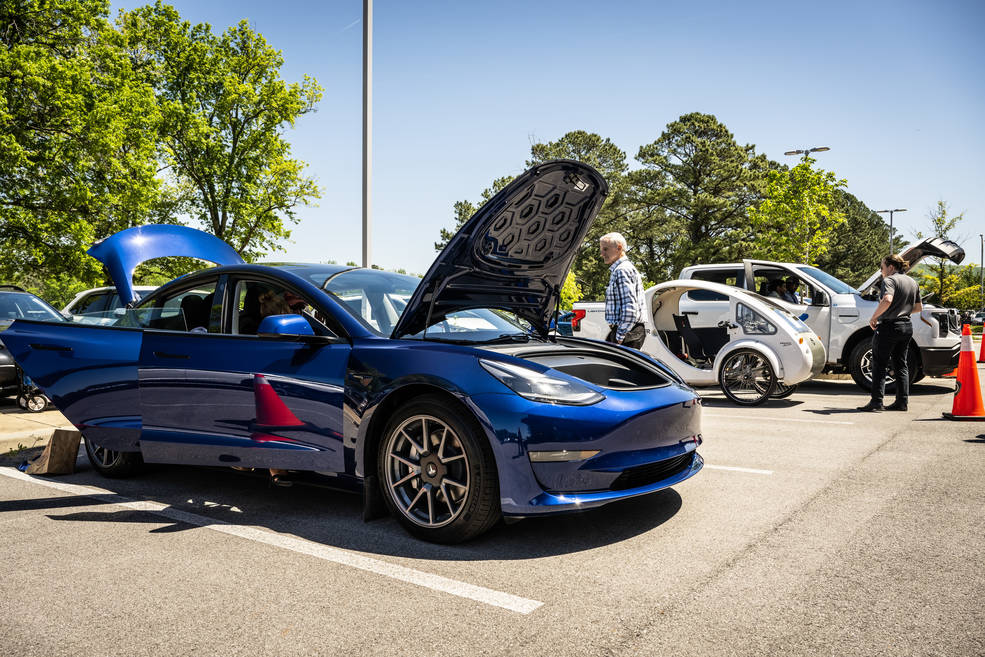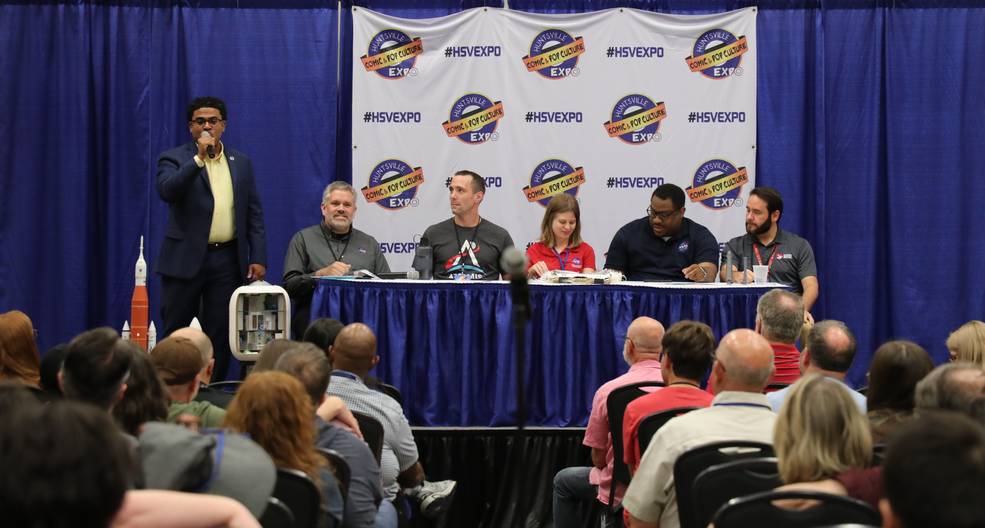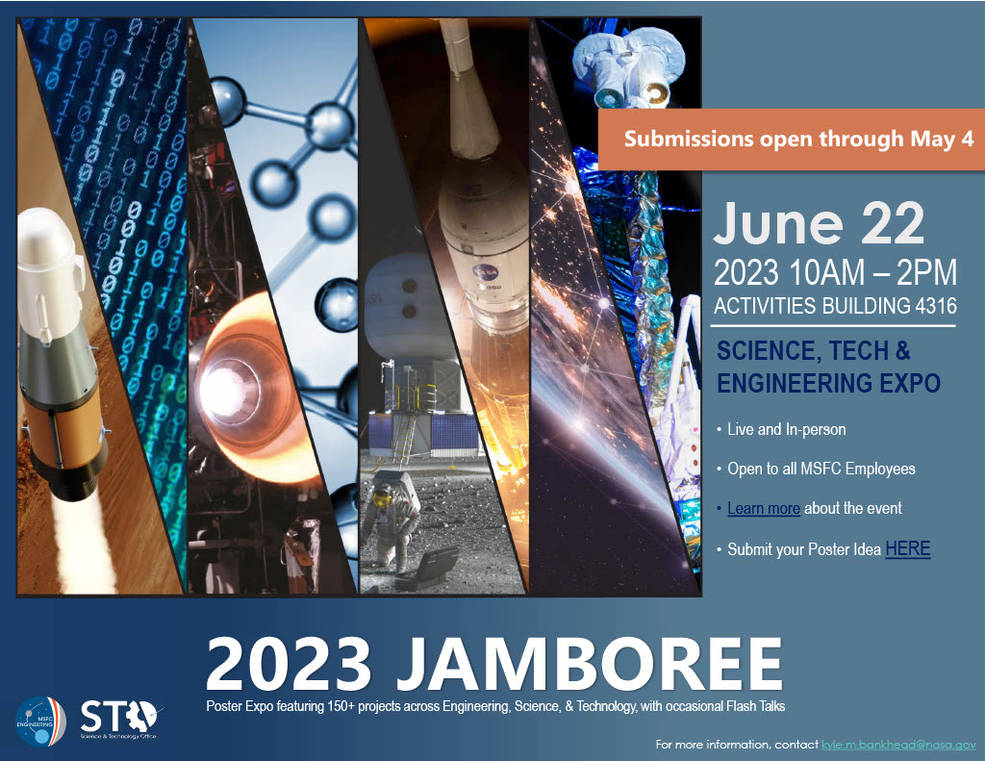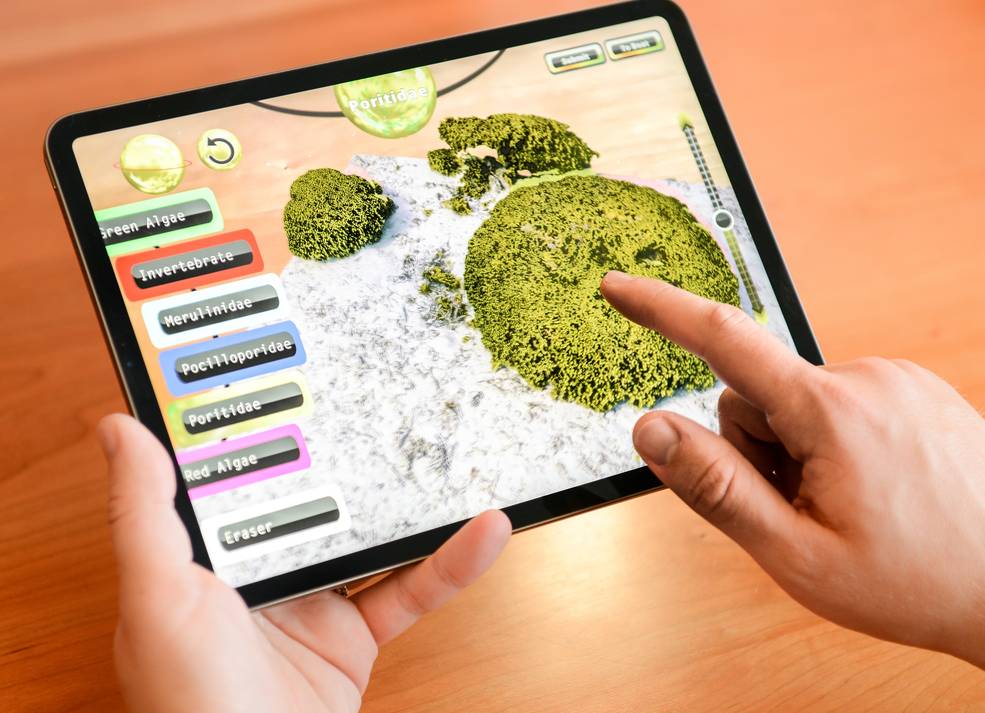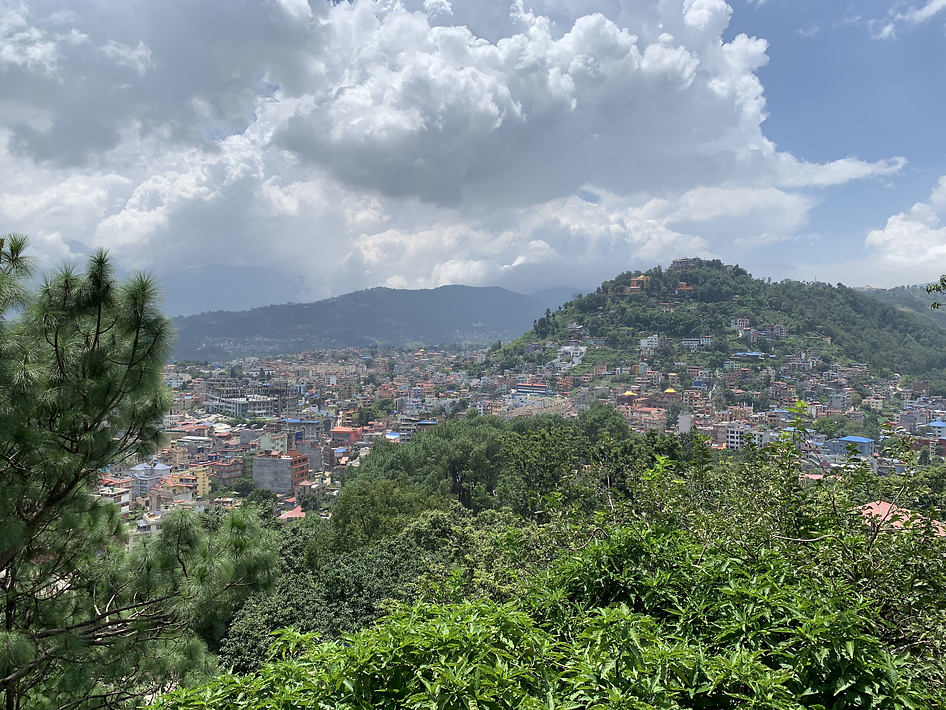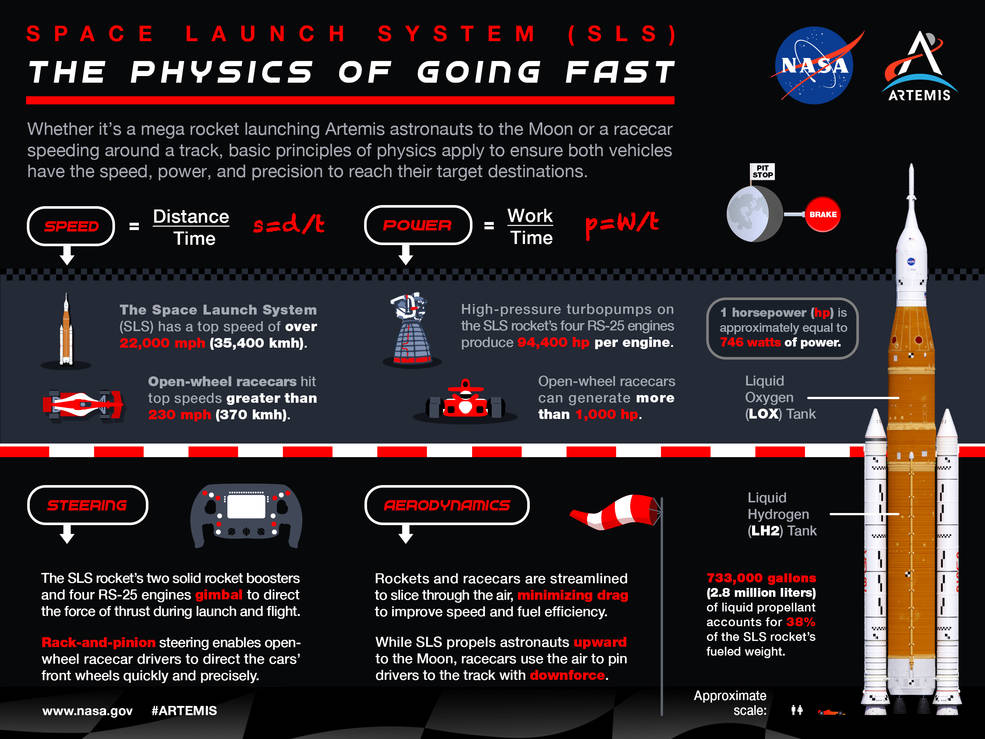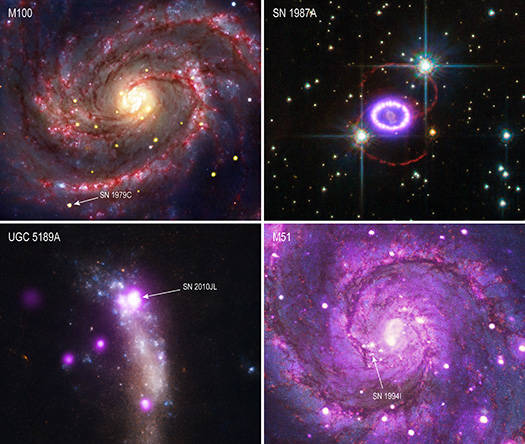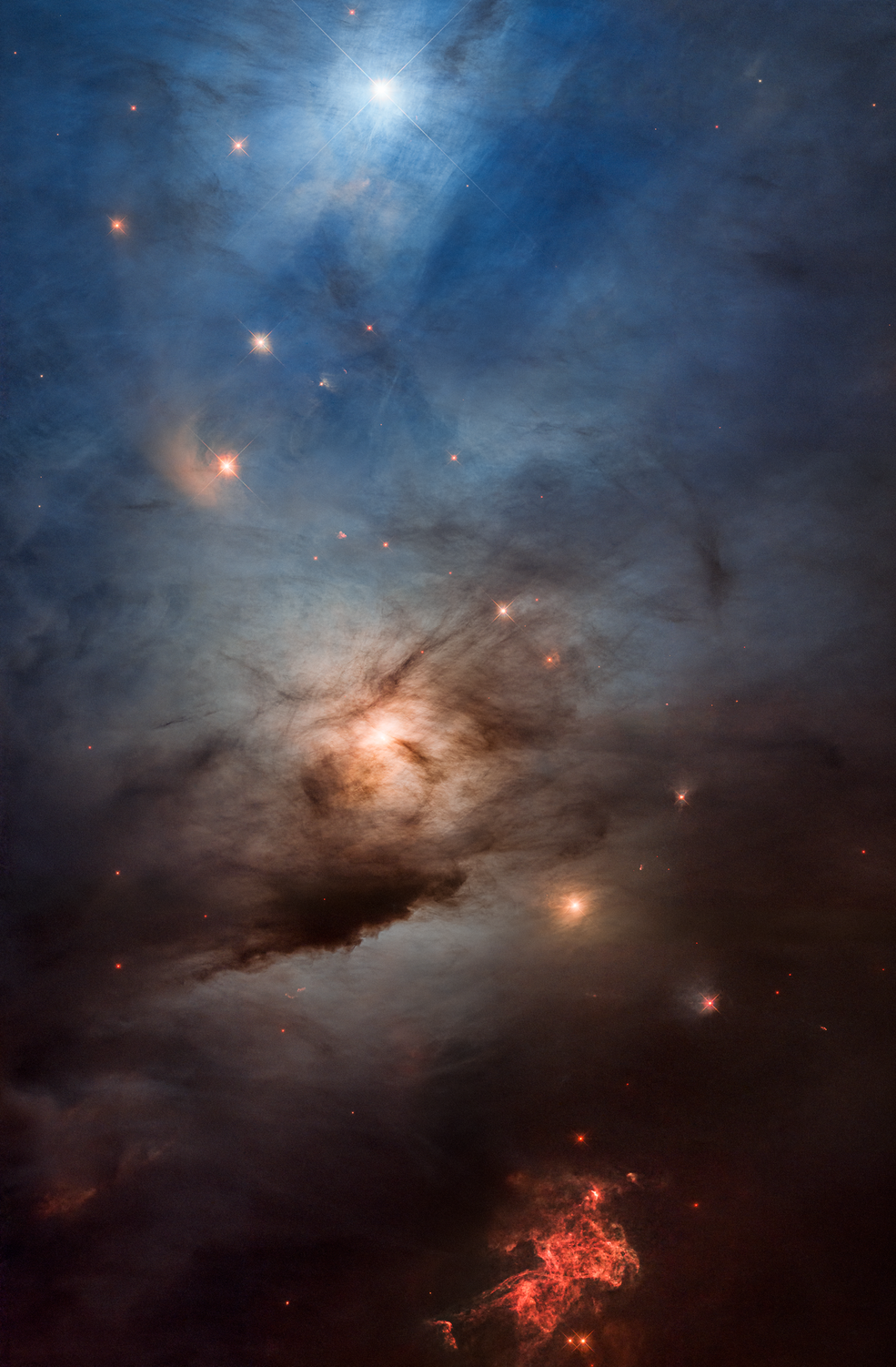The Marshall Star for April 26, 2023.
In This Week’s Star
- NASA Announces Winners of 2023 Human Exploration Rover Challenge
- Crew-5 Astronauts to Visit Marshall Workforce on May 1
- Access Cards to be Scanned at All Redstone Arsenal Gates Beginning April 28
- Take 5 with Don Krupp
- Marshall to Host Administrator’s Agency Honor Awards Ceremony May 3
- Center Hosts Successful Return to In-Person Earth Day Events
- Marshall Team Members Provide NASA Mission Update at Huntsville Expo
- 2023 Jamboree, Poster Expo Now Accepting Submissions
- 5 Ways Open Science is Transforming NASA Research and Protecting Our Planet
- Moon Rockets and Racecars: Navigating the Physics of Speed
- New Stellar Danger to Planets Identified by NASA’s Chandra
- Hubble Celebrates 33rd Anniversary with a Peek into Nearby Star-Forming Region
NASA Announces Winners of 2023 Human Exploration Rover Challenge
NASA has announced the winners of the 2023 Human Exploration Rover Challenge (HERC), with Escambia High School in Pensacola, Florida, winning first place in the high school division, and the University of Alabama in Huntsville capturing the college and university title. The complete list of award winners:
High School Division
- First Place: Escambia High School, Pensacola, Florida
- Second Place: Parish Episcopal School, Dallas
- Third Place: Escola Estadual de Ensino Médio Frei Plácido, Bagé, Rio Grande do Sul, Brazil
College/University Division
- First Place: University of Alabama in Huntsville
- Second Place: Owensboro Community and Technical College, Owensboro, Kentucky
- Third Place: Ohio Northern University, Ada, Ohio
Ingenuity Award
- Tecnológico de Monterrey – Cuernavaca, Xochitepec, Morelos, Mexico
Phoenix Award
- High School Division: East Central High School, Moss Point, Mississippi
- College/University Division: University of South Alabama, Mobile
Task Challenge Award
- High School Division: Academy of Arts, Careers, and Technology, Reno, Nevada
- College/University Division: Owensboro Community and Technical College, Owensboro, Kentucky
Project Review Award
- High School Division: Academy of Arts, Careers, and Technology, Reno, Nevada
- College/University Division: Birla Institute of Technology and Science, Pilani, Rajasthan, India
Featherweight Award
- Rhode Island School of Design, Providence
Safety Award
- High School Division: McKinley Technology High School, Washington, D.C.
- College/University Division: Texas Tech University, Lubbock
Crash and Burn Award
- Tecnológico de Monterrey – Cuernavaca, Xochitepec, Morelos, Mexico
Jeff Norris and Joe Sexton Memorial Pit Crew Award
- High School Division: Liceo Científico Dr. Miguel Canela Lázaro, Salcedo, Hermanas Mirabal Province, Dominican Republic
- College/University Division: Instituto Especializado de Estudios Superiores Loyola. San Cristobal, Dominican Republic
Team Spirit Award
- Instituto Tecnológico de Santo Domingo, Dominican Republic
Most Improved Performance Award
- High School Division: Escambia High School, Pensacola, Florida
- College/University Division: Instituto Tecnológico de Santo Domingo, Dominican Republic
Social Media Award
- High School Division: Young Tinker Educational Foundation, Bhubaneswar, Odisha, India
- College/University Division: KIET Group of Institutions, Ghaziabad, Uttar Pradesh, India
STEM Engagement Award
- High School Division: Parish Episcopal School, Dallas
- College/University Division: Universidad Nacional de Ingeniería, Rimac, Peru
The annual engineering competition – one of NASA’s longest standing challenges – held its concluding event April 21-22 at the U.S. Space & Rocket Center, near NASA’s Marshall Space Flight Center.
More than 500 students from around the world participated during HERC’s 29th anniversary competition. Student teams represented 16 states, the District of Columbia, and Puerto Rico, as well as the countries of Bolivia, Brazil, Colombia, Dominican Republic, India, Mexico, Peru, and Singapore. Teams were awarded points based on navigating a half-mile obstacle course, conducting mission-specific task challenges, and completing multiple safety and design reviews with NASA engineers.
“Throughout this eight-month-long competition, students learn NASA’s engineering design cycle by submitting detailed reports and passing critical reviews by NASA engineers,” said Kevin McGhaw, director of NASA’s Office of STEM Engagement Southeast Region. “By operating within real-world constraints, students gain authentic knowledge to better imagine and develop innovative technologies which could be used in future NASA missions.”
HERC is one of NASA’s eight Artemis Student Challenges reflecting the goals of the Artemis program, which seeks to land the first woman and first person of color on the Moon while establishing establish a long-term presence for science and exploration.
NASA uses such challenges to encourage students to pursue degrees and careers in the STEM fields of science, technology, engineering, and mathematics.
“NASA has a vested interest in providing students access to complex engineering challenges,” said Vemitra Alexander, HERC activity lead for NASA’s Office of STEM Engagement. “Developing a skilled and diverse workforce in STEM is critical to maintaining our nation’s success in scientific research and space exploration.”
HERC is managed by NASA’s Southeast Regional Office of STEM Engagement at Marshall. Since its inception in 1994, more than 15,000 students have participated in HERC – with many former students now working at NASA, or within the aerospace industry.
Replays of the competition are available on NASA Marshall YouTube and NASA’s HERC Facebook page.
To learn more about HERC, please visit here.
Crew-5 Astronauts to Visit Marshall Workforce on May 1
By Jonathan Deal
NASA’s SpaceX Crew-5 mission astronauts Nicole Mann, Josh Cassada, and JAXA (Japan Aerospace Exploration Agency) astronaut Koichi Wakata will visit NASA’s Marshall Space Flight Center on May 1 at 10 a.m. in Activities Building 4316.
The astronauts will share highlights from their mission to the International Space Station as part of the Expedition 68 crew. There will also be an opportunity for audience members to ask questions and a brief photograph opportunity immediately following.
During their stay on the space station, the Crew-5 members contributed to hundreds of experiments and technology demonstrations, including microgravity’s effects on the cardiorespiratory system, modeling heart tissue to improve therapies for spaceflight-caused health issues, and the 3D bioprinting of human organs and tissues for implantation, among multiple other types of research.
The Crew-5 mission launched Oct. 5, 2022, on a Falcon 9 rocket from NASA’s Kennedy Space Center and docked to the space station the next day. The crew splashed down safely in the SpaceX Dragon Endurance in the Gulf of Mexico off the coast of Tampa, Florida, on March 11 after 157 days in space.
Mann – who is a colonel in the U.S. Marine Corps and first indigenous woman from NASA to go to space – served as commander of the Crew-5 mission, conducting two spacewalks totaling 14 hours, 02 minutes.
Cassada is a physicist and U.S. Navy test pilot. He served as a flight engineer on the Crew-5 mission, conducting three spacewalks totaling 21 hours, 24 minutes. Wakata, a Japan Aerospace Exploration Agency astronaut, is the first Japanese astronaut to complete a long-term stay on the ISS as a crew member of ISS Expeditions 18, 19 and 20. From November 2013 to May 2014, he stayed on the ISS for 188 days as a crew member of Expeditions 38 and 39. On Expedition 39, he led the international crew as the first Japanese Commander of the ISS.
The Crew-5 mission also included Roscosmos cosmonaut Anna Kikina, who served as a Crew-5 mission specialist and ISS-68 flight engineer.
Learn more about Crew-5 here.
Jonathan Deal, a public affairs specialist, supports Marshall’s Office of Strategic Analysis & Communications.
Access Cards to be Scanned at All Redstone Arsenal Gates Beginning April 28
Redstone Arsenal gate guards will check and scan the identification of all individuals – drivers and passengers – entering the installation for a two-week period beginning April 28 through May 12. For NASA personnel, this means scanning state-issued driver’s licenses that are registered in the Automated Installation Entry system. During the 100% check periods, automated access initiatives including facial recognition and RFID lanes may be curtailed.
The 100% ID check is part of an initiative to revalidate the Army’s installation access model and inform labor force support requirements. The data gathered will help determine security guard manning requirements by tracking the volume per hour, per lane. A second round of mandated checks will run from June 1-14.
Take 5 with Don Krupp
By Wayne Smith
Don Krupp says he can thank his high school buddies for inspiring him to pursue a career path that eventually led him to NASA’s Marshall Space Flight Center.
Krupp, the associate program manager for the Human Landing System (HLS), said he was competing to be his high school’s class valedictorian with two of his friends, falling just short of the honor by .02 points. After graduation, Krupp wasn’t sure what he wanted to study at Tennessee Technical University (TTU).
“Since they planned to study mechanical engineering at TTU, the competitive side of me decided to also study engineering, but I chose electrical engineering because I was told it was the hardest of the engineering curriculums at TTU,” Krupp said.
As he neared graduation and earning that engineering degree, Krupp was signing up for as many on-campus job interviews as possible.
“One day I noticed that there was going to be 12 on-campus interviews with NASA,” he said. “I woke up at 5:00 a.m. on the day the sign-up list was posted (yes, I’m so old that we actually used paper sign-up lists) to get one of the 12 interview spots. After the interview, I didn’t hear anything until five months later, three months after I graduated, and I had a phone interview with Marshall. I received a job offer the next day without an in-person interview or site visit. To be truthful, I wasn’t really sure where Marshall was located when I accepted the job.”
Following the interesting path that led him to Marshall 34 years ago, Krupp still enjoys his work.
“I can count on one hand the number of days that I didn’t jump out of bed knowing that I got to go to work at MSFC!”
Question: What are your primary responsibilities as associate program manager for the Human Landing System?
Krupp: In addition to advising and assisting the HLS program manager, I am responsible for all program office business operations, strategic planning and communication, staffing, data management, export control, and cybersecurity for the program. I also serve as the primary liaison between the program office and the center’s governing councils and committees.
Question: What excites you most about the future of human space exploration and your team’s role in it?
Krupp: I’m most excited that the agency, Congress, and the nation have embraced the plans to return humans to the Moon’s surface. I’m also extremely excited that the HLS program is partnering with industry in new, never attempted ways to not only allow NASA astronauts to land on the lunar surface, but also enabling commercial endeavors on the Moon. HLS is the key to providing human access to the surface of both the Moon and eventually, Mars.
Question: What has been the proudest moment of your career and why?
Krupp: Without hesitation, it is the Artemis I mission. Having spent most of my career working launch vehicle pre-formulation and formulation activities, I had not worked a project that actually flew. As the chief of the Flight Mechanics and Analysis Division, personnel in that division designed, developed, tested, and certified the guidance, navigation, and control system algorithms and the mission and fault management algorithms that flew the SLS (Space Launch System) rocket on Artemis I. I am proud and honored to have been associated with the incredible engineers that enabled the SLS vehicle to put the Orion spacecraft into orbit and to send it to the Moon
Question: Who or what drives/motivates you?
Krupp: I want to do my best to serve, help, and encourage the incredible employees at Marshall. Over my career, I’ve been lucky to have been associated with some of the most intelligent, caring, and dedicated people. They have encouraged me, mentored me, and sometimes have told me some hard truths. Marshall employees are family, and how can you not do your very best for your family?
Question: What do you enjoy doing with your time while away from work?
Krupp: I enjoy spending time and getting into mini adventures with my best friend, who also happens to be my wife, as we transition into being empty nesters. I’m extremely active in my start-up church, including serving as chair of the church council, baking the communion bread for Sunday service, and leading the children’s moment during service with my puppet friend, Alice the Camel. Since the COVID-19 pandemic, I’ve also started baking, although you won’t find me competing on the Great British Baking Show.
Smith, a Media Fusion employee and the Marshall Star editor, supports Marshall’s Office of Strategic Analysis & Communications.
Marshall to Host Administrator’s Agency Honor Awards Ceremony May 3
NASA’s Marshall Space Flight Center will host the 2022 Administrator’s Agency Honor Awards May 3 at 11:30 a.m. where NASA will recognize NASA civil servants and contractors from across the agency with the Distinguished Service Medal and Distinguished Public Service Medal – NASA’s highest form of recognition. Coverage of the event can be viewed live on NASA TV and NASA’s YouTube page.
This will be the first live, in-person honor awards program since 2019 and will recognize those who have made significant achievements to NASA’s mission at an agency level. The awards ceremony will be held at Activities Building 4316 and is open for award winners and their families.
NASA Deputy Associate Administrator Casey Swails and Marshall Director Jody Singer will provide remarks along with presenting the awards to the honorees. Bill Marks, deputy director of center operations at Marshall, will emcee the event.
The Distinguished Service Medal is awarded to any government employee who, by distinguished service, ability, or vision has personally contributed to NASA’s advancement of United States’ interests. The Distinguished Public Service Medal is awarded to non-government individuals or to an individual who was not a government employee during the period in which the service was performed, whose distinguished service, ability, or vision has personally contributed to NASA’s advancement of United States’ interests.
Center Hosts Successful Return to In-Person Earth Day Events
By Jessica Barnett
With more than 600 trees given away and multiple people already sharing their appreciation, Malene McElroy is confident the first in-person Earth Day event at NASA’s Marshall Space Flight Center was a success.
It was so successful that it’s all but guaranteed next year’s event will also be in person.
McElroy is Marshall’s sustainability coordinator, and she worked with a team of Marshall employees to plan this year’s get-together. There were giveaways, vendors, a car show featuring all-electric vehicles, and more.
McElroy said she wasn’t surprised the tree giveaway was popular, with about 630 tree saplings handed out. Participants also received compostable eating utensils, sustainable stickers, and sustainable fire starters that use beeswax paper.
“We wanted to give away things that would help employees employ sustainable practices,” McElroy said. “People are trying. We just have to educate people so they know what to do.”
That’s why there were also plenty of opportunities for Marshall employees to ask questions or share their knowledge with others. Some employees brought their own EVs for the car show, and several participated in the sustainable building tours at Building 4221.
Some vendors are already eager to return for next year, and McElroy said she hopes they’ll have more interactive booths for participants. She also hopes there will be more vendors, something others have expressed wanting, too.
“A lot of people want us to bring the vendors back,” McElroy said. “I kept it small, because I didn’t know how many people would show up.”
As it turns out, there were more participants than McElroy expected. Many who attended were excited to see co-workers for the first time since the COVID-19 pandemic forced them into teleworking.
Having the event outdoors also provided an opportunity for people to participate while on their way to lunch or their office.
The team is already planning next year’s Earth Day event, and they want your feedback. A survey is open now until May 4 for anyone who would like to provide feedback or ideas.
There will be another opportunity to celebrate environmental friendliness during Pollinator Week, which will be June 19-25. McElroy said preliminary talks are underway, and she encourages all Marshall employees to stay tuned for updates.
Barnett, a Media Fusion employee, supports Marshall’s Office of Strategic Analysis & Communications.
Marshall Team Members Provide NASA Mission Update at Huntsville Expo
Marshall team members provide a NASA mission update to more than 100 audience members during a “Moon to Mars” panel discussion at the Huntsville Comic & Pop Culture Expo on April 21. From left to right are Lance Davis, Marshall public affairs officer; David Hitt, payload integration with Jacobs/ESSCA for the SLS (Space Launch System) rocket; Logan Kennedy, surface lead for the Human Landing System program; Tracie Prater, technical management, habitation systems development office; Arthur Brown, lead, Environmental Control and Life Support Systems Integration and Development Office; and Darius Yaghoubi, alternate lead systems engineer with the Mars Ascent Vehicle. (NASA/Kevin Cortes)
2023 Jamboree, Poster Expo Now Accepting Submissions
NASA’s Marshall Space Flight Center holds an annual Jamboree and Poster Expo – celebrating the intersection of NASA technology, engineering, and research endeavors across the center. Co-hosted each year by Marshall’s Engineering Directorate and Science and Technology Office, the event is designed to foster collaboration, innovation, and professional growth among programs and project teams. Marshall employees – civil servants and contractors – who are working on a cool mission or technology and want others to know about should showcase their work in Marshall’s 2023 Jamboree & Poster Expo. The event will feature more than 150 projects across engineering, science, and technology, with occasional Flash Talks. The submission period is now through May 4 and the jamboree is scheduled for 10 a.m. – 2 p.m. June 22 in Activities Building 4316. Learn more about this event and contact Kyle Bankhead for questions. (NASA)
5 Ways Open Science is Transforming NASA Research and Protecting Our Planet
By Amanda Moon Adams
In celebration of Earth Day, it’s important to recognize the role of open science in protecting our planet and advancing NASA’s research efforts. Through initiatives like NASA’s Transform to Open Science (TOPS), researchers can collaborate and share data, promoting transparency and scientific integrity.
By sharing research findings and data publicly, NASA is enabling scientists and the public to develop new insights, tools, and strategies for protecting the environment. As we continue to face pressing environmental challenges, it is important to prioritize open science and work towards a more collaborative and inclusive approach to science for the benefit of all.
Open science principles are being leveraged in a variety of NASA programs, including NeMO-Net, Landsat, and the SERVIR program, which are using artificial intelligence, satellite imagery, and machine learning to better understand and protect our planet’s ecosystems. Highlighted below are just some of the many programs using this collaborative capability:
Mapping Coral Habitats with NeMO-NET
Users can join NASA in protecting our planet’s coral reefs with NeMO-Net. The mobile app and online platform allow users to explore the ocean and classify different types of coral reefs, contributing to our understanding of these vital ecosystems. By using artificial intelligence and satellite imagery, NeMO-Net promotes the power of open science and citizen science in protecting our oceans.
Landsat: An Open Science Approach to Understanding Earth’s Changing Surface
The U.S. Geological Survey and NASA’s Landsat program provides open access to high-resolution images of our planet’s changing surface, which can be used for a variety of applications including monitoring land use and cover changes, tracking the impacts of climate change, and managing natural resources. This information can help inform policy decisions and resource management strategies to better protect the planet’s ecosystems.
NASA-Funded Scientists Estimate Carbon Stored in African Dryland Trees
Dryland trees in Africa play a vital role in the global carbon cycle and climate system. Thanks to the groundbreaking work of NASA-funded scientists, we now have a comprehensive estimate of the carbon stored in almost 10 billion individual trees in the Saharan, Sahel, and Sudanian zones of Africa. By leveraging advanced technology and open science principles, scientists used high-resolution satellite images and machine learning techniques to map and assess the amount of carbon stored outside of dense tropical forests. The data is free and publicly available, allowing us all to better understand the distribution and role of dryland trees in our ecosystem.
Climate Patterns Thousands of Miles Away Affect U.S. Bird Migration
Climate patterns thousands of miles away can affect bird migration timing in the US, and NASA-funded research now allows us to better understand how changes around the globe can impact these bird behaviors and migration patterns. By leveraging advanced satellite technology and open science principles, NASA scientists can track and predict these patterns in real-time, helping us protect and conserve our wildlife.
NASA’s SERVIR Program Takes on Air Pollution in the Himalayas
NASA atmospheric scientists and the SERVIR program are working together to improve air quality in Nepal, Bhutan, and Pakistan. Steep valleys and cold, dense mountain air can trap smoke and pollution close to the ground, leading to dangerously poor air quality in cities like Kathmandu. To combat this, the team has built a suite of air quality products, including an air pollution forecast model that integrates data from satellites in low and geostationary Earth orbit.
These data are openly available on the Nepal Department of Environment Air Quality Watch dashboard, allowing policymakers and the public to access and use them. This open science approach fosters collaboration and feedback from decision-makers, enabling the team to continue to improve the data and provide powerful tools to protect breathable air as the region grows.
NASA’s Marshall Space Flight Center manages the SERVIR Science Coordination Office.
NASA TOPS aims to promote a culture of open science within NASA and beyond. As part of NASA’s Open-Source Science Initiative, TOPS seeks to rapidly transform agencies, organizations, and communities towards more inclusive and accessible research practices. Through a range of communication activities, TOPS engages with scientists, researchers, and the public to promote the importance of public access to federally funded research and data. TOPS also supports the broader Year of Open Science initiatives and works with aligned stakeholder groups to advance the goals of open science.
For more information about NASA TOPS, visit here. For more information on NASA’s Science Mission Directorate, visit here.
Moon Rockets and Racecars: Navigating the Physics of Speed
When NASA’s SLS (Space Launch System) rocket launches the first astronauts for their journey around the Moon during Artemis II, its four RS-25 engines and two solid rocket boosters will produce more than 8.8 million pounds of thrust at liftoff. Launching mega rockets like SLS beyond low-Earth orbit and driving high-performance racecars around a track require a key understanding of physics, aerodynamics, and precision. NASA is working to land the first woman and first person of color on the Moon under Artemis. SLS is part of NASA’s backbone for deep space exploration, along with Orion and the Gateway in orbit around the Moon, and commercial human landing system. SLS is the only rocket that can send Orion, astronauts, and supplies to the Moon in a single mission. (NASA/Kevin O’Brien)
New Stellar Danger to Planets Identified by NASA’s Chandra
Astronomers using data from NASA’s Chandra X-ray Observatory and other telescopes have identified a new threat to life on planets like Earth: a phase during which intense X-rays from exploded stars can affect planets over 100 light-years away. This result, as outlined in this press release, has implication for the study of exoplanets and their habitability.
This newly found threat comes from a supernova’s blast wave striking dense gas surrounding the exploded star, as depicted in the upper right of our artist’s impression. When this impact occurs it can produce a large dose of X-rays that reaches an Earth-like planet (shown in the lower left, illuminated by its host star out of view to the right) months to years after the explosion and may last for decades. Such intense exposure may trigger an extinction event on the planet.
A new study reporting this threat is based on X-ray observations of 31 supernovae and their aftermath – mostly from NASA’s Chandra X-ray Observatory, Swift and NuSTAR missions, and ESA’s XMM-Newton – show that planets can be subjected to lethal doses of radiation located as much as about 160 light-years away. Four of the supernovae in the study (SN 1979C, SN 1987A, SN 2010jl, and SN 1994I) are shown in composite images containing Chandra data in the supplemental image.
Prior to this, most research on the effects of supernova explosions had focused on the danger from two periods: the intense radiation produced by a supernova in the days and months after the explosion, and the energetic particles that arrive hundreds to thousands of years afterward.
If a torrent of X-rays sweeps over a nearby planet, the radiation could severely alter the planet’s atmospheric chemistry. For an Earth-like planet, this process could wipe out a significant portion of ozone, which ultimately protects life from the dangerous ultraviolet radiation of its host star. It could also lead to the demise of a wide range of organisms, especially marine ones at the foundation of the food chain, leading to an extinction event.
After years of lethal X-ray exposure from the supernova’s interaction, and the impact of ultraviolet radiation from an Earth-like planet’s host star, a large amount of nitrogen dioxide may be produced, causing a brown haze in the atmosphere, as shown in the illustration. A “de-greening” of land masses could also occur because of damage to plants.
A separate artist’s impression (panel #1) depicts the same Earth-like planet as having been abundant with life at the time of the nearby supernova, years before most of the X-ray’s impacts are felt (panel #2).
Among the four supernovae in the set of images, SN 2010jl has produced the most X-rays. The authors estimate it to have delivered a lethal dose of X-rays for Earth-like planets less than about 100 light-years away.
There is strong evidence – including the detection in different locations around the globe of a radioactive type of iron — that supernovae occurred close to Earth between about 2 million and 8 million years ago. Researchers estimate these supernovae were between about 65 and 500 light-years away from Earth.
Although the Earth and the Solar System are currently in a safe space in terms of potential supernova explosions, many other planets in the Milky Way are not. These high-energy events would effectively shrink the areas within the Milky Way galaxy, known as the Galactic Habitable Zone, where conditions would be conducive for life as we know it.
Because the X-ray observations of supernovae are sparse, particularly of the variety that strongly interact with their surroundings, the authors urge follow-up observations of interacting supernovae for months and years after the explosion.
The paper describing this result appears in the April 20, 2023, issue of The Astrophysical Journal, and is available here. The other authors of the paper are Ian Brunton, Connor O’Mahoney, and Brian Fields (University of Illinois at Urbana-Champaign), Adrian Melott (University of Kansas), and Brian Thomas (Washburn University in Kansas).
NASA’s Marshall Space Flight Center manages the Chandra program. The Smithsonian Astrophysical Observatory’s Chandra X-ray Center controls science operations from Cambridge, Massachusetts, and flight operations from Burlington, Massachusetts.
Hubble Celebrates 33rd Anniversary with a Peek into Nearby Star-Forming Region
Astronomers are celebrating NASA’s Hubble Space Telescope‘s 33rd launch anniversary with an ethereal photo of a nearby star-forming region, NGC 1333. The nebula is in the Perseus molecular cloud, and located approximately 960 light-years away.
Hubble’s colorful view, showcased through its unique capability to obtain images from ultraviolet to near-infrared light, unveils an effervescent cauldron of glowing gasses and pitch-black dust stirred up and blown around by several hundred newly forming stars embedded within the dark cloud. Hubble just scratches the surface because most of the star birthing firestorm is hidden behind clouds of fine dust – essentially soot – that are thicker toward the bottom of the image. The blackness in the image is not empty space, but filled with obscuring dust.
To capture this image, Hubble peered through a veil of dust on the edge of a giant cloud of cold molecular hydrogen – the raw material for fabricating new stars and planets under the relentless pull of gravity. The image underscores the fact that star formation is a messy process in the rambunctious universe.
Ferocious stellar winds, likely from the bright blue star at the top of the image, are blowing through a curtain of dust. The fine dust scatters the starlight at blue wavelengths.
Farther down, another bright, super-hot star shines through filaments of obscuring dust, looking like the Sun shining through scattered clouds. A diagonal string of fainter accompanying stars looks reddish because dust is filtering starlight, allowing more of the red light to get through.
The bottom of the picture presents a keyhole peek deep into the dark nebula. Hubble captures the reddish glow of ionized hydrogen. It looks like a fireworks finale, with several overlapping events. This is caused by pencil-thin jets shooting out from newly forming stars outside the frame of view. These stars are surrounded by circumstellar disks, which may eventually produce planetary systems, and powerful magnetic fields that direct two parallel beams of hot gas deep into space, like a double light saber from science fiction films. They sculpt patterns on the hydrogen cocoon, like laser-light-show tracings. The jets are a star’s birth announcement.
This view offers an example of the time when the Sun and planets formed inside such a dusty molecular cloud, 4.6 billion years ago. The Sun didn’t form in isolation but was instead embedded inside a mosh pit of frantic stellar birth, perhaps even more energetic and massive than NGC 1333.
Hubble was deployed into orbit around Earth on April 25, 1990, by NASA astronauts aboard the Space Shuttle Discovery. To date, the legendary telescope has taken approximately 1.6 million observations of nearly 52,000 celestial targets. This treasure trove of knowledge about the universe is stored for public access in the Mikulski Archive for Space Telescopes, at the Space Telescope Science Institute in Baltimore, Maryland.
The Hubble Space Telescope is a project of international cooperation between NASA and ESA. NASA’s Goddard Space Flight Center manages the telescope. The Space Telescope Science Institute (STScI) in Baltimore, Maryland, conducts Hubble and Webb science operations. STScI is operated for NASA by the Association of Universities for Research in Astronomy, in Washington, D.C.
NASA’s Marshall Space Flight Center was the lead field center for the design, development, and construction of the space telescope.



























